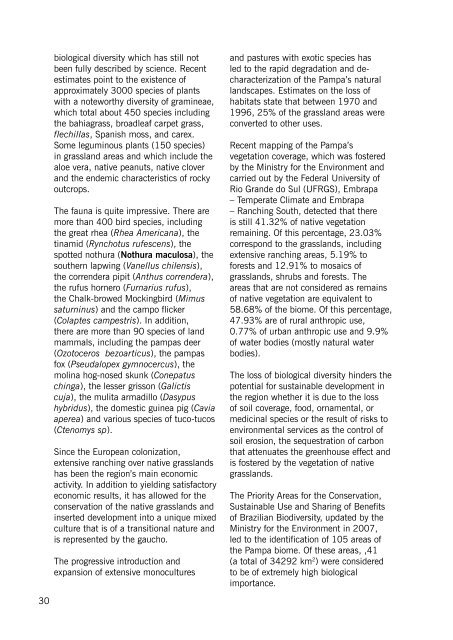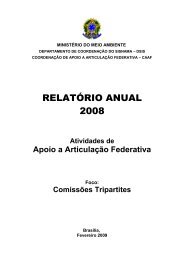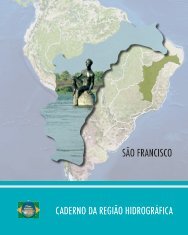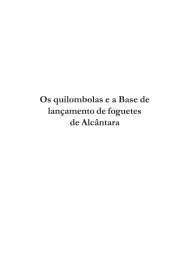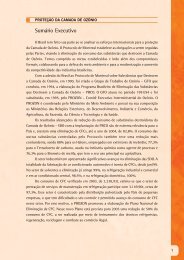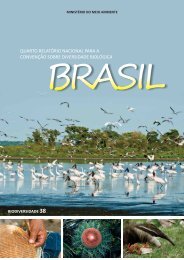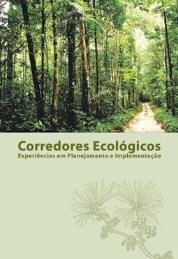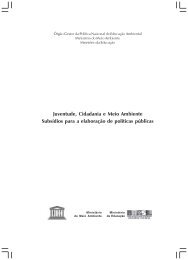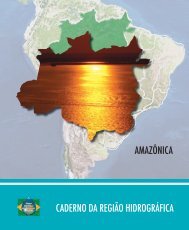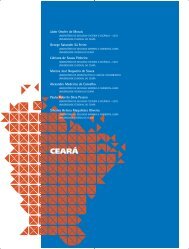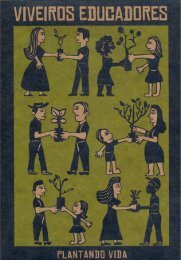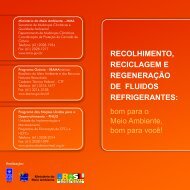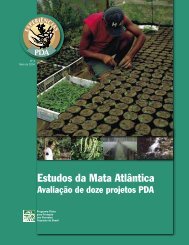Protected Areas
Protected Areas
Protected Areas
- No tags were found...
Create successful ePaper yourself
Turn your PDF publications into a flip-book with our unique Google optimized e-Paper software.
iological diversity which has still notbeen fully described by science. Recentestimates point to the existence ofapproximately 3000 species of plantswith a noteworthy diversity of gramineae,which total about 450 species includingthe bahiagrass, broadleaf carpet grass,flechillas, Spanish moss, and carex.Some leguminous plants (150 species)in grassland areas and which include thealoe vera, native peanuts, native cloverand the endemic characteristics of rockyoutcrops.The fauna is quite impressive. There aremore than 400 bird species, includingthe great rhea (Rhea Americana), thetinamid (Rynchotus rufescens), thespotted nothura (Nothura maculosa), thesouthern lapwing (Vanellus chilensis),the correndera pipit (Anthus correndera),the rufus hornero (Furnarius rufus),the Chalk-browed Mockingbird (Mimussaturninus) and the campo flicker(Colaptes campestris). In addition,there are more than 90 species of landmammals, including the pampas deer(Ozotoceros bezoarticus), the pampasfox (Pseudalopex gymnocercus), themolina hog-nosed skunk (Conepatuschinga), the lesser grisson (Galictiscuja), the mulita armadillo (Dasypushybridus), the domestic guinea pig (Caviaaperea) and various species of tuco-tucos(Ctenomys sp).Since the European colonization,extensive ranching over native grasslandshas been the region’s main economicactivity. In addition to yielding satisfactoryeconomic results, it has allowed for theconservation of the native grasslands andinserted development into a unique mixedculture that is of a transitional nature andis represented by the gaucho.The progressive introduction andexpansion of extensive monoculturesand pastures with exotic species hasled to the rapid degradation and decharacterizationof the Pampa’s naturallandscapes. Estimates on the loss ofhabitats state that between 1970 and1996, 25% of the grassland areas wereconverted to other uses.Recent mapping of the Pampa’svegetation coverage, which was fosteredby the Ministry for the Environment andcarried out by the Federal University ofRio Grande do Sul (UFRGS), Embrapa– Temperate Climate and Embrapa– Ranching South, detected that thereis still 41.32% of native vegetationremaining. Of this percentage, 23.03%correspond to the grasslands, includingextensive ranching areas, 5.19% toforests and 12.91% to mosaics ofgrasslands, shrubs and forests. Theareas that are not considered as remainsof native vegetation are equivalent to58.68% of the biome. Of this percentage,47.93% are of rural anthropic use,0.77% of urban anthropic use and 9.9%of water bodies (mostly natural waterbodies).The loss of biological diversity hinders thepotential for sustainable development inthe region whether it is due to the lossof soil coverage, food, ornamental, ormedicinal species or the result of risks toenvironmental services as the control ofsoil erosion, the sequestration of carbonthat attenuates the greenhouse effect andis fostered by the vegetation of nativegrasslands.The Priority <strong>Areas</strong> for the Conservation,Sustainable Use and Sharing of Benefitsof Brazilian Biodiversity, updated by theMinistry for the Environment in 2007,led to the identification of 105 areas ofthe Pampa biome. Of these areas, ,41(a total of 34292 km 2 ) were consideredto be of extremely high biologicalimportance.30


